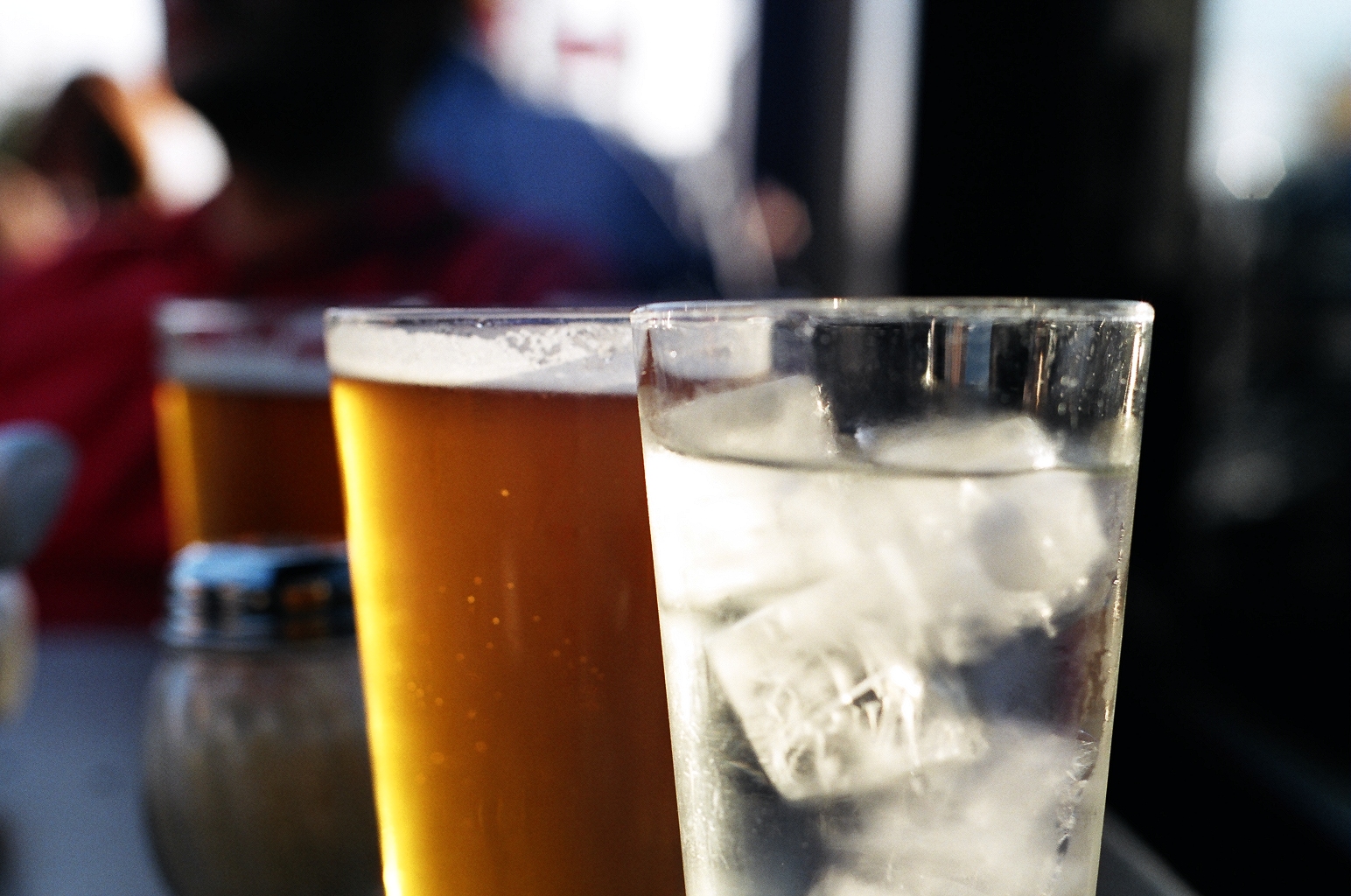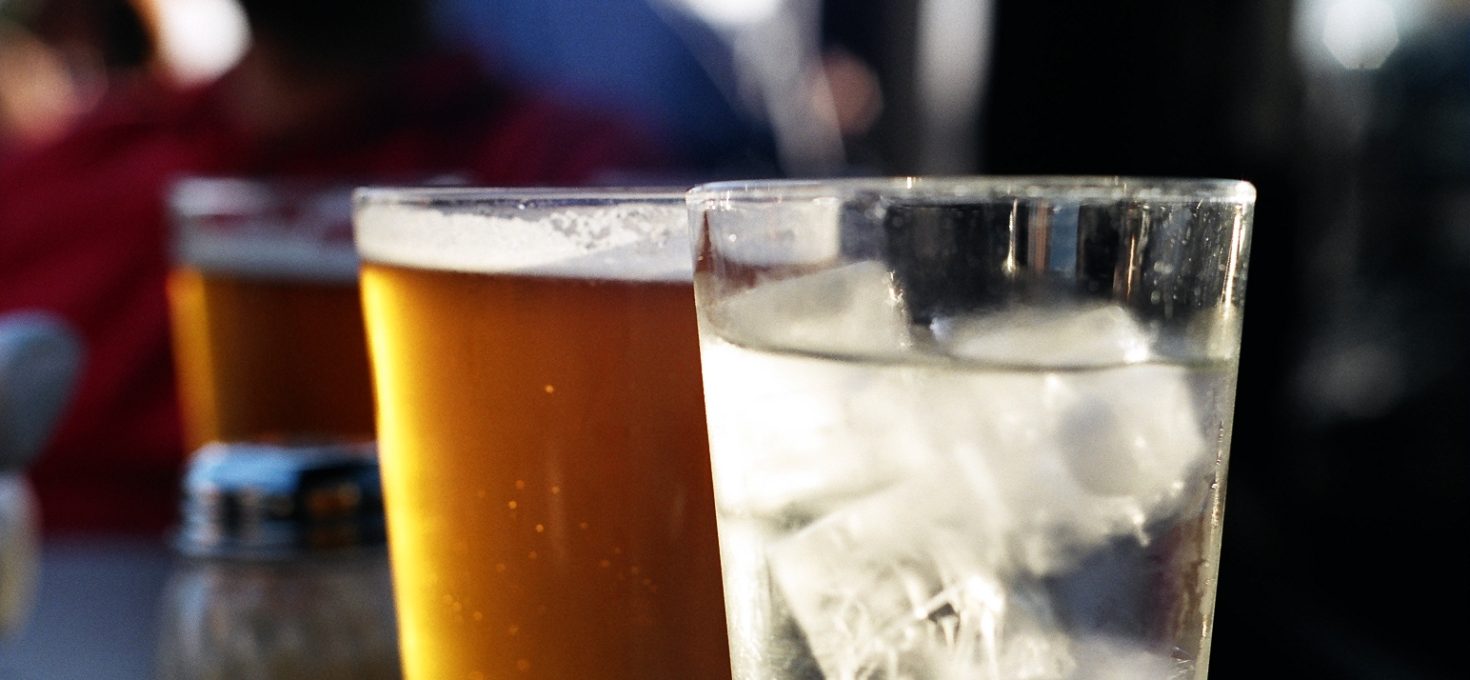
After our first post about indulging in chocolate and this week’s post about enjoying alcohol, something tells us that we’re quickly becoming one of your favorite blogs to visit. So how can a registered dietitian possibly justify boozing it up? Well, moderation is key, and today’s photo provides some clues.
Ideally our daily hydration needs should be met with non-alcoholic beverages such as water, milk, and 100% fruit and vegetable juices, among others. When enjoyed responsibly, an ice-cold beer, glass of wine or a mixed drink is a refreshing and tasty choice.
First, let’s define the key term: moderation. This means up to one drink per day for women, and up to two drinks per day for men. One drink is equal to: one 12-ounce beer, 5 ounces of wine or 1.5 ounces of (80 proof distilled) spirits.
Many of the health benefits of moderate alcohol consumption have focused on red wine, and allowed wine lovers to enjoy their sipping with less guilt. The antioxidant resveratrol – found in the skin of grapes – is the main component in red wine linked to a decreased risk of heart disease; however, it may also be the alcohol itself that aids in reducing the disease risk.
– Summary from The Mayo Clinic
– The Health Benefits of Wine (abstract only)
– Alcohol, Red Wine and Cardiovascular Disease from the Journal of Nutrition
– Alcohol Consumption Fact Sheets and Publications from the NIH
While there are benefits to enjoying alcohol in moderation, be aware that alcohol can provide adverse effects if you have pre-existing health concerns, cannot mix alcohol with certain medications, and – ahem – indulge to excess. (Exceptions to the latter: bachelor(ette) parties, celebrating finding work in this economy and, for our Jewish friends, drinking on Purim and Passover.)
While alcohol does not provide nutrients, it may provide antioxidants like the aforementioned resveratrol, and it definitely provides calories. Liquid calories add up quickly. This is especially true for cocktails that provide a combination of alcohol and additional ingredients such as cream, sweetened mixes and syrups, regular soda and juices.
According to our Simple Serving Guide for Intelligent Indulgence:
– To eyeball a serving of wine, you’re looking at about a half a wine glass, and for spirits, that’s about the size of a shot glass.
– Moderate alcohol intake as well as calories. Alternate with a glass of water or other low-calorie, non-alcoholic choices between drinks, have an alcoholic drink with a meal only, or use a smaller glass.
– Order up a wine spritzer, which mixes low-calorie seltzer with wine, go light with the mix in (diet soda, light juice) or skip it all together and order your drink on the rocks.
The Bottom Line: Think ahead if you’d like alcohol to fit – moderately of course – into your plan.
How Stacey got the shot: On FILM! Fuji Superia ISO 400 outside on a summer evening. The other details such as shutter speed and aperture will remain a mystery (because she didn’t write them down). Ah, the magic of film!


Beer me!
The closer I get to Friday afternoon out here in Hawaii, the better those drinks look! Stacey, you’re inspiring me to develop my photography skills! Here’s a great food photo website you might want to take a look at — http://foodgawker.com/ — it’s a (mouthwatering) gallery where food bloggers can showcase their food and photography skills. Have a great weekend.
I like your blog very much. Alcohol is great for cooking, too. I don’t consume any but a chicken stew in beer sauce is to die for.
Thanks, Jennifer! We’ll definitely check out that site!
Vivian – What a wonderful topic to touch on later – cooking with alcohol! Thank you for following our blog and offering great ideas.